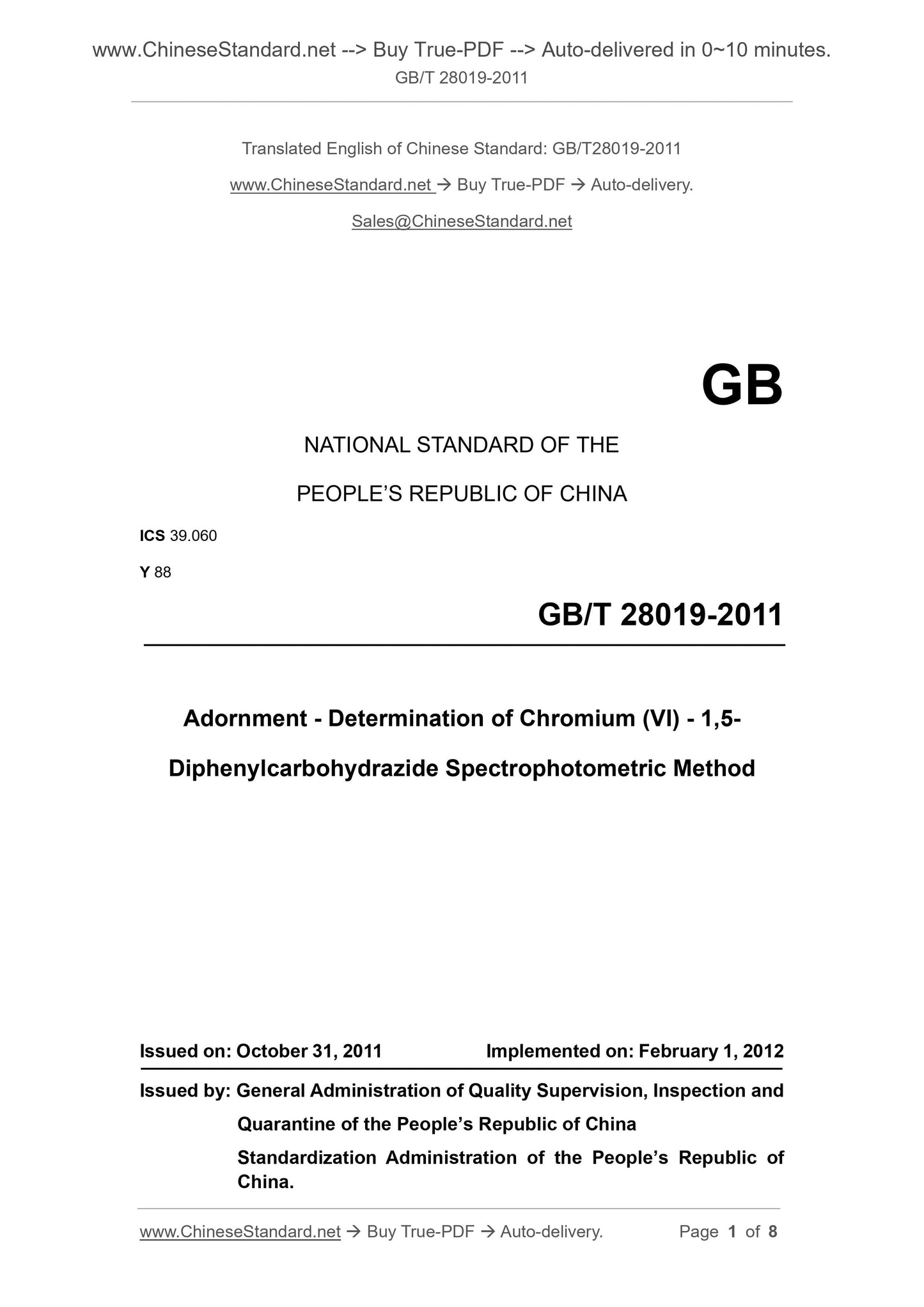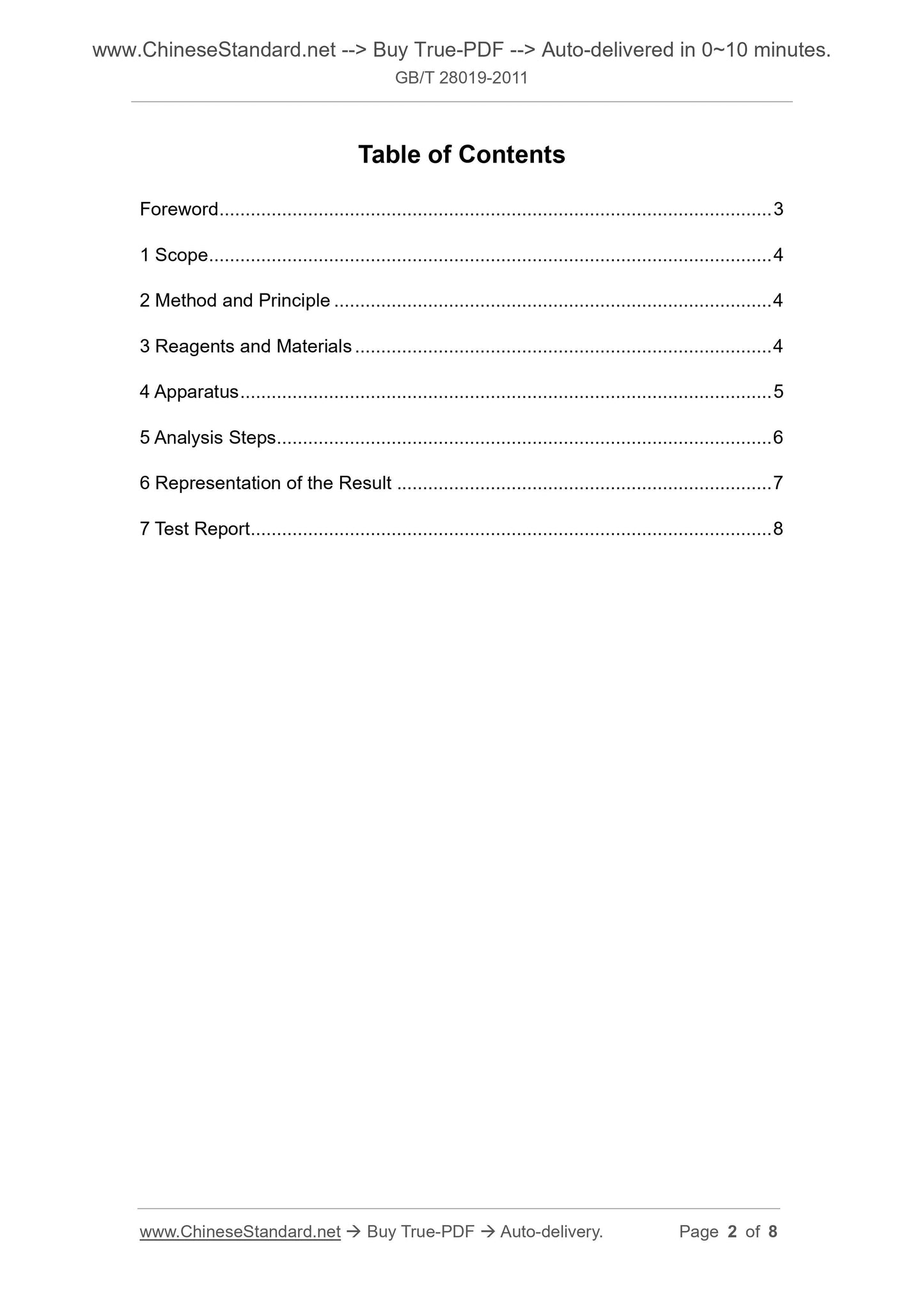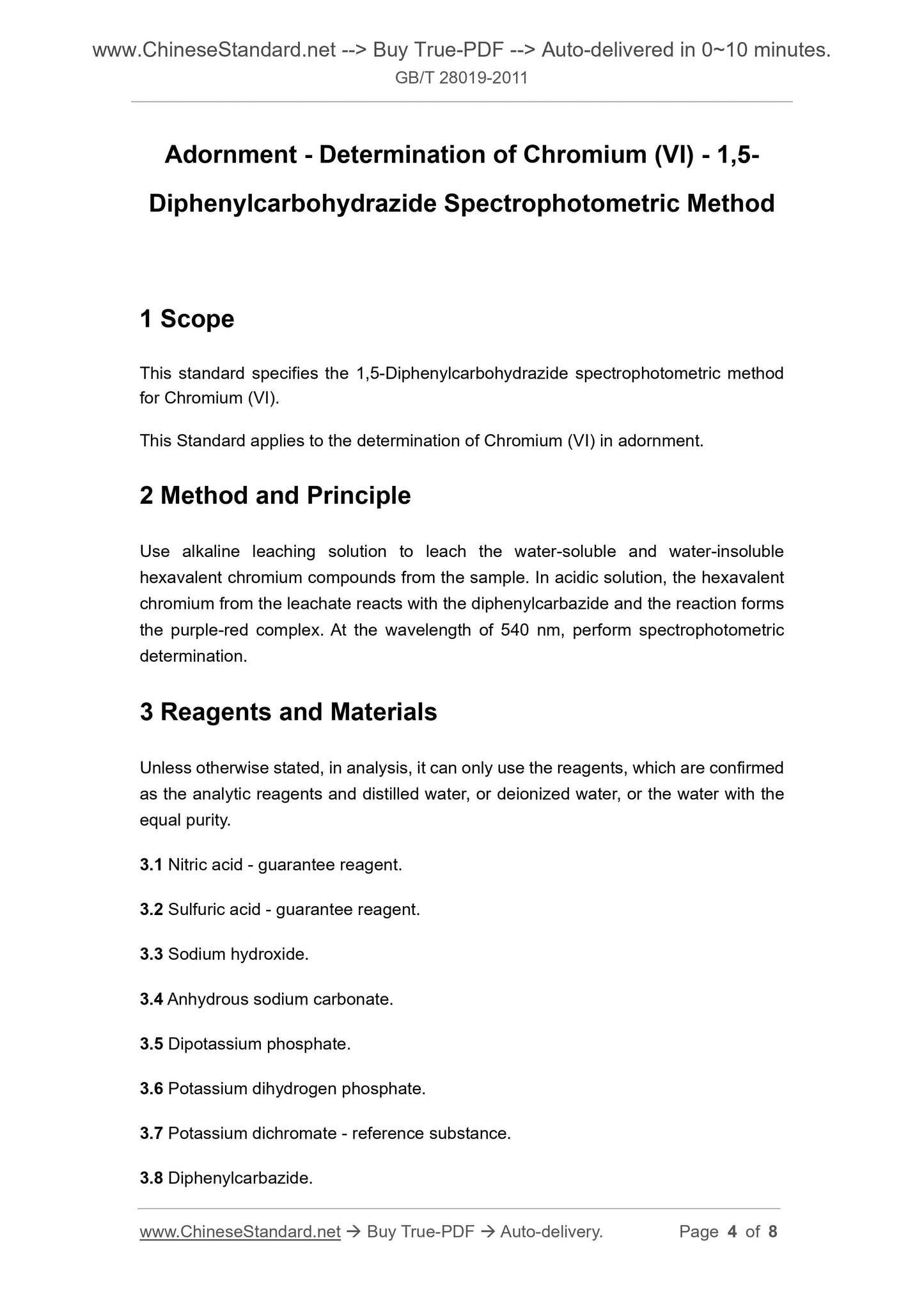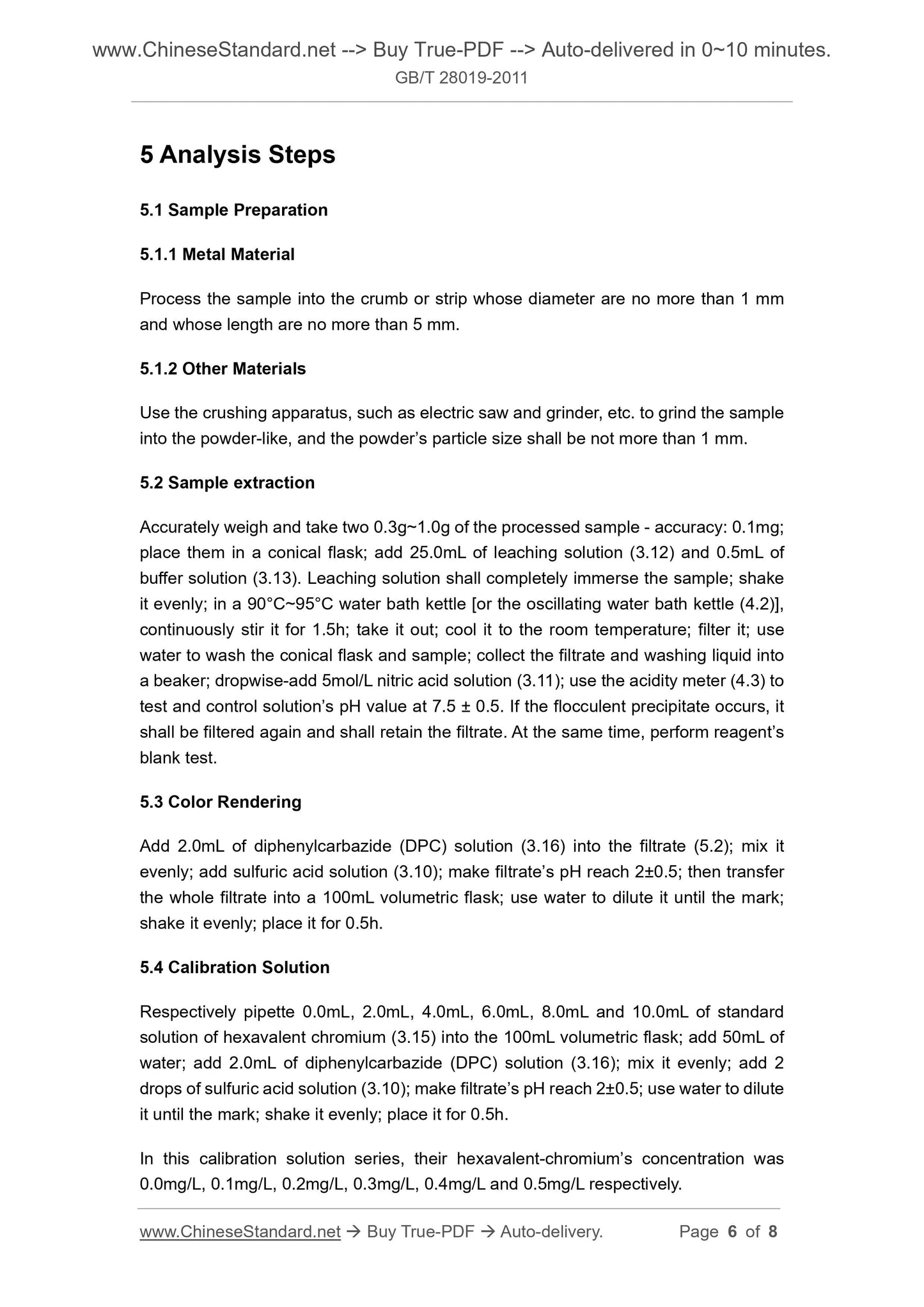1
/
of
4
www.ChineseStandard.us -- Field Test Asia Pte. Ltd.
GB/T 28019-2011 English PDF (GB/T28019-2011)
GB/T 28019-2011 English PDF (GB/T28019-2011)
Regular price
$70.00
Regular price
Sale price
$70.00
Unit price
/
per
Shipping calculated at checkout.
Couldn't load pickup availability
GB/T 28019-2011: Adornment - Determination of Chromium (VI). 1, 5-Diphenylcarbohydrazide spectrophotometric method
Delivery: 9 seconds. Download (and Email) true-PDF + Invoice.Get Quotation: Click GB/T 28019-2011 (Self-service in 1-minute)
Newer / historical versions: GB/T 28019-2011
Preview True-PDF
Scope
This standard specifies the 1,5-Diphenylcarbohydrazide spectrophotometric methodfor Chromium (VI).
This Standard applies to the determination of Chromium (VI) in adornment.
Basic Data
| Standard ID | GB/T 28019-2011 (GB/T28019-2011) |
| Description (Translated English) | Adornment - Determination of Chromium (VI). 1, 5-Diphenylcarbohydrazide spectrophotometric method |
| Sector / Industry | National Standard (Recommended) |
| Classification of Chinese Standard | Y88 |
| Classification of International Standard | 39.060 |
| Word Count Estimation | 6,649 |
| Date of Issue | 2011-10-31 |
| Date of Implementation | 2012-02-01 |
| Regulation (derived from) | Announcement of Newly Approved National Standards No. 15 of 2011 |
| Issuing agency(ies) | General Administration of Quality Supervision, Inspection and Quarantine of the People's Republic of China, Standardization Administration of the People's Republic of China |
| Summary | This standard specifies the jewelry hexavalent chromium diphenyl hydrazine spectrophotometric measurement method. This standard applies to the determination of hexavalent chromium in jewelry. |
Share







